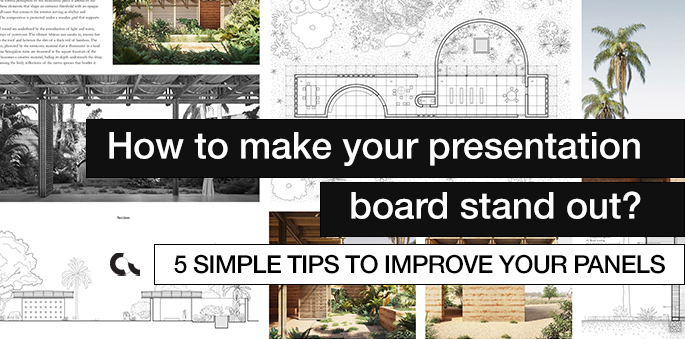Adequate creating and composing architecture panels is a key to a successful project delivery, a final presentation, or an awarded competition entry. It is an important part of designing process and very often it stands a synthesis of your long-term work. So, you supposed to take into consideration many aspects during creating your boards. In this article we would like to present five simple tips and advice that will help make your presentation boards stand out. If you follow rules below, your panels will grab attention of the jury panel. The tips will get you closer to a good result in architecture competitions or university public presentations.
1. Make it simple
You probably have heard that many times before. Make it simple. But why? Why my presentation boards should be simple when my design is so complex?
If the project is complex for you, it will seem to be even more complicated and demanding for the jury made of your lecturer or colleagues. So, we, as architects, use presentation boards to show others our design in the clearest and most readable way, to present our ideas shortly and the most communicatively. Thera are some tricks that you can use to simplify your panels. Firstly, you may divide your drawing into sections. There may be diagrams put in one sector, technical drawings, details, axonometric views, or perspectives in others. Plans look the best when they directly correspond with the sections or elevations. It is also a good solution to divide your panels horizontally or vertically – to make a composition with your drawings.
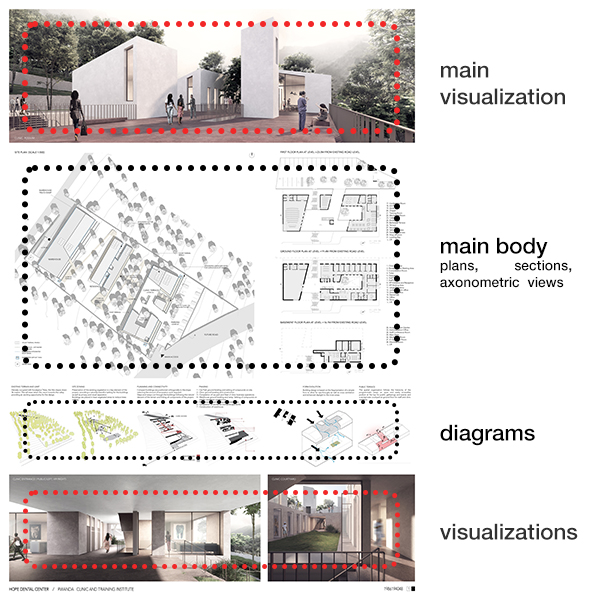
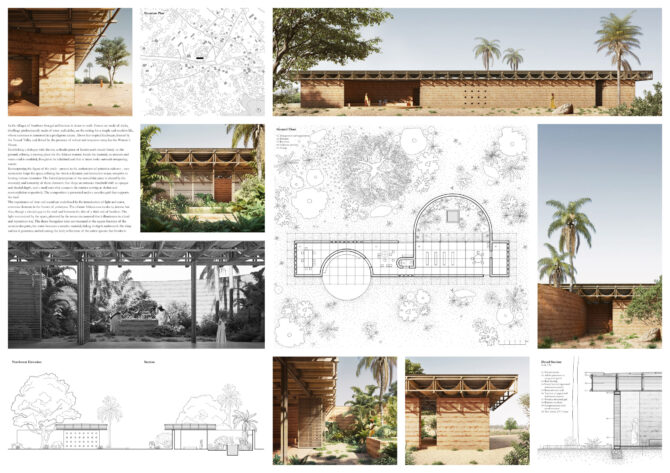
2. Show the clue
It is very important to show the key aspects of your work. When you have a final presentation during your studies, you may have a chance to express your design perfectly but when you participate in an architecture competition there is no opportunity to clarify your designing decisions. Your drawing and panels speak for you, so the leading idea and the concept behind the submission should be easily readable. You may use contrast colors to emphasize the most essential parts. Diagrams expressing the form-finding process, explaining circulation among the area, or functional sketches may be found very useful and make your design understandable. It is also important to show the most characteristics spaces on the perspectives – the ones that make the character of the whole area.
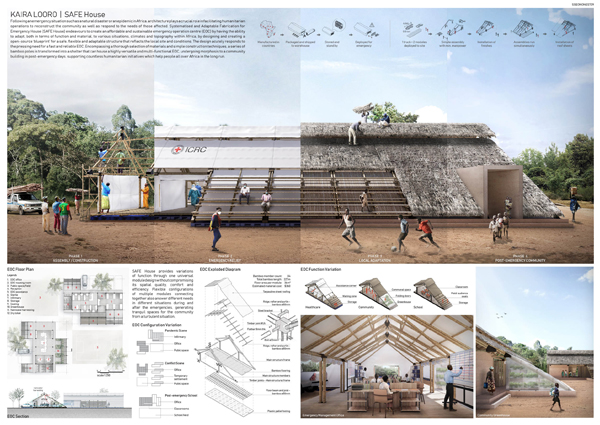
3. Quality, not quantity
You need to be aware that it is easy to recognize if you put a lot of effort into drawing and postproduction or not. The visualizations, plans, sections, axonometric views are supposed to be developed on a similar level. It is better to exclude some drawings from the board than put a lot of pictures in bad quality or even worse – unfinished. Make sure that every drawing on the final panels is the best you can prepare. Remember that you use those drawings to show your skills and predispositions.
4. Importance of 3d views
Axonometric views are the best drawings to show the voluminosity and special relations between the elements. You can use exploded axonometry to better explain what is happening inside the building. Using this type of drawing it is also possible to present how the designed structure works as well as show the construction and finishing layers. When it comes to perspectives, they could express the character and the atmosphere of the place in the best way. You may make the 3d model on a similar level as the rest of the drawings but when you pick the shots and positions of the camera, make sure that in those places your model is prepared with more details. There is no need to waste your time on preparing 3d details that will not be even visible on 1:200 or 1:500 scale.
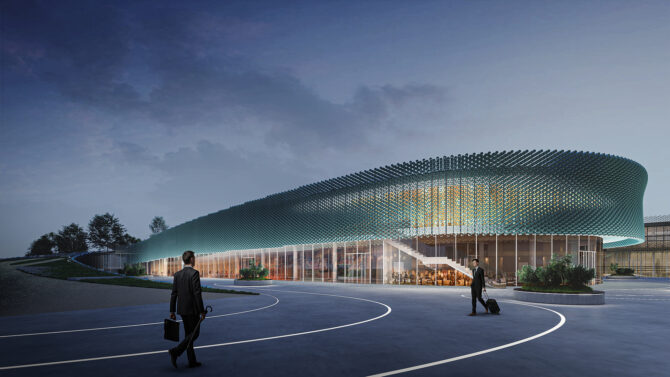
5. Title and description
It would be nice if you could make up a title that is easy to remember and emphasize your approach to the design in the most effective way. If you make a catchy title, you will stay in the jury’s minds longer and have greater chances of being awarded. Moreover, make it visible. All texts and descriptions should be readable, so please put them in the appropriate to the boards’ format sizes and do not use the flourishing fonts. Be certain that your design has all the necessary description, but do not go too far and try not to overtalk your design.
We hope that these tips will get you closer to the awards! Good luck in your future challenges!
If you need more inspirations, check 20 Free Project Boards Templates prepared by competitions.archi and collaborators. It is a set of 20 awarded project boards available in Photoshop and InDesign formats.

